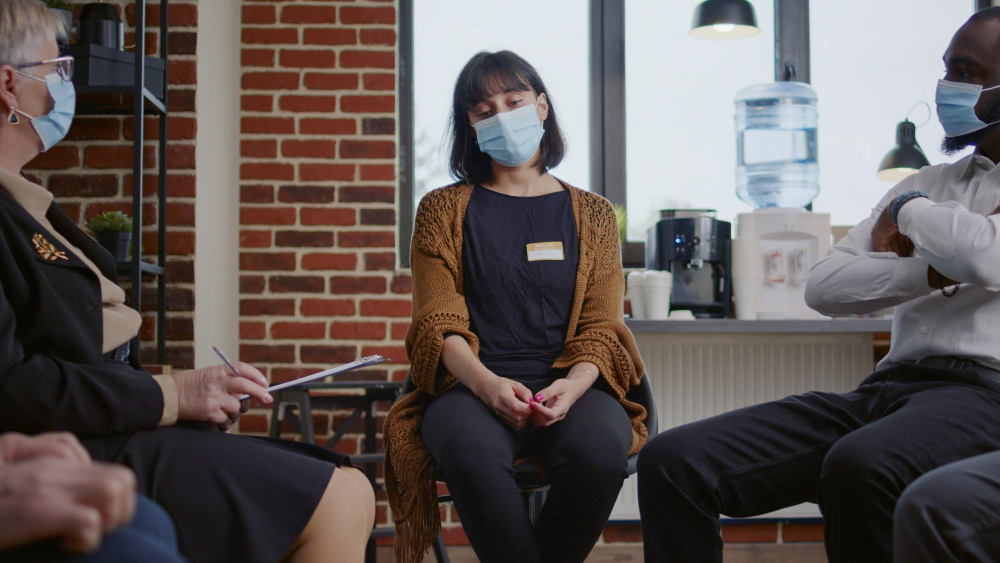Inpatient vs. Outpatient Rehab
July 2, 2024
Make the right choice for addiction recovery - inpatient vs. outpatient rehab. Explore treatment settings, approaches, and financial considerations.
Understanding Treatment Settings
When seeking addiction treatment, it's important to understand the two primary treatment settings: inpatient rehab and outpatient rehab. Each setting offers unique benefits and considerations based on the individual's needs and circumstances.

Inpatient Rehab Overview
Inpatient rehab, also known as residential treatment, is an intensive program designed to treat serious substance use disorders and addictions. It provides individuals with 24-hour medical and emotional support within a controlled environment. This setting is ideal for those who require a higher level of care and a structured environment to facilitate their recovery journey.
In inpatient rehab, individuals reside on-site for the duration of their treatment. This allows for round-the-clock supervision and immediate access to medical assistance, including supervised detox, if necessary. The structured nature of inpatient programs provides a carefully scheduled day focused on recovery, with a combination of individual and group therapy sessions, educational programs, and recreational activities.
The length of inpatient treatment can vary, typically lasting anywhere from 30 days to 6 months. The duration depends on the individual's needs, progress, and treatment plan. Inpatient rehab offers a comprehensive approach to recovery, addressing the physical, psychological, and emotional aspects of addiction.
Outpatient Rehab Overview
Outpatient rehab is a less restrictive treatment option compared to inpatient programs. It can be a suitable choice for individuals with a mild substance use disorder or those who have completed an inpatient program and need continued support. Outpatient treatment provides various levels of care, including partial hospitalization and intensive outpatient treatment [1].
Unlike inpatient rehab, individuals in outpatient programs do not reside on-site. Instead, they attend treatment sessions while living at home or in a supportive environment. This flexibility allows individuals to continue with their daily responsibilities, such as work or school, while receiving treatment.
Outpatient rehab typically involves individual and group counseling sessions, relapse prevention techniques, and recovery skills training. The frequency and duration of sessions can vary based on the individual's needs and progress. The length of outpatient treatment can range from 3 to 6 months or extend beyond a year for more serious cases.
Choosing between inpatient and outpatient rehab depends on factors such as the severity of the addiction, the individual's motivation, and the availability of support systems. It's essential to consult with a healthcare professional or addiction specialist to determine the most appropriate treatment setting for an individual's unique circumstances.
Factors Influencing Setting Choice
When it comes to choosing between inpatient and outpatient rehab, several factors come into play. Two key considerations include the severity and complexity of the addiction, as well as the individual's motivation and support systems.
Severity and Complexity
Inpatient rehab, also known as residential treatment, is typically recommended for individuals with severe overdose, withdrawal symptoms, or medical and psychiatric complications. These individuals require intensive care and 24-hour medical and emotional support within a controlled environment. Inpatient programs provide a high level of supervision and are designed to treat serious substance use disorders and addictions.
On the other hand, outpatient rehab is generally suitable for individuals with less severe addiction issues and those who do not require round-the-clock care. Outpatient programs provide flexibility, allowing individuals to maintain their work and life responsibilities while still receiving treatment. This option is typically considered for individuals with some available support systems and the motivation to attend consistently.
Motivation and Support Systems
Motivation and support systems play a crucial role in determining the appropriate treatment setting. Inpatient treatment is often recommended for individuals with overwhelming substance use problems who may lack motivation or have limited social support. The structured environment and constant support provided in inpatient rehab can help these individuals focus on their recovery and develop healthier coping mechanisms.
For individuals with a strong support system and the motivation to attend treatment consistently, outpatient rehab may be a suitable option. Outpatient programs, such as partial hospitalization and intensive outpatient programs, allow individuals to receive treatment while maintaining their daily responsibilities. These programs offer greater flexibility and can be tailored to fit individual schedules, making them a more accessible choice for those with support systems in place.
By considering the severity and complexity of the addiction, as well as the individual's motivation and support systems, individuals can make an informed decision about whether inpatient or outpatient rehab is the right choice for their specific needs. It's important to consult with healthcare professionals or addiction specialists who can provide personalized guidance based on the individual's circumstances.
Treatment Approaches
When it comes to substance abuse treatment, various treatment approaches are utilized to address the complex nature of addiction. In both inpatient and outpatient rehab settings, a combination of medical and psychosocial interventions, along with behavioral therapies, are commonly employed to support individuals on their path to recovery.
Medical and Psychosocial Interventions
Medical and psychosocial interventions play a crucial role in substance abuse treatment programs. Medical interventions involve the use of pharmacotherapy, where medications are used to manage withdrawal symptoms, reduce cravings, and address any co-occurring mental health disorders. These medications are prescribed and monitored by healthcare professionals to ensure safe and effective treatment.
Psychosocial interventions, on the other hand, focus on the psychological and social aspects of addiction. These interventions may include individual therapy, group therapy, marital and family therapy, and cognitive-behavioral therapy. Through these approaches, individuals can explore the underlying causes of their addiction, develop coping strategies, and learn healthier ways of managing stress and emotions.
The combination of medical and psychosocial interventions allows for a comprehensive approach to addiction treatment, addressing both the physical and psychological aspects of the individual's journey towards recovery.
Behavioral Therapies
Behavioral therapies are an integral part of substance abuse treatment programs. These therapies aim to modify problematic behaviors and help individuals develop healthier patterns of thinking and decision-making. Several behavioral therapies have proven to be effective in treating substance use disorders:
- Cognitive-Behavioral Therapy (CBT): CBT helps individuals identify and modify negative thought patterns and behaviors associated with substance abuse. By challenging distorted beliefs and learning new coping strategies, individuals can develop skills to prevent relapse and maintain long-term recovery.
- Contingency Management: Contingency management is based on providing incentives to reinforce positive behaviors such as drug-free urine tests or meeting treatment goals. This approach encourages individuals to stay motivated and engaged in their recovery process.
- Relapse Prevention: Relapse prevention therapy focuses on identifying high-risk situations and developing strategies to prevent relapse. Individuals learn to recognize triggers, develop coping skills, and create a relapse prevention plan to maintain their sobriety.
- Self-Help Groups: Self-help groups, such as Alcoholics Anonymous (AA) or Narcotics Anonymous (NA), provide support, encouragement, and a sense of community for individuals in recovery. These groups allow individuals to share experiences, receive guidance, and find ongoing support from peers who have gone through similar challenges.
By incorporating these behavioral therapies into treatment programs, individuals can gain the necessary tools and skills to navigate the challenges of recovery and maintain a substance-free lifestyle.
Treatment approaches may vary depending on the specific needs and circumstances of the individual. It's important to consult with healthcare professionals and addiction specialists to determine the most appropriate treatment approach for each individual's unique situation.
Specialized Treatment Programs
In the realm of addiction treatment, there are specialized programs designed to cater to specific populations and address their unique needs. Two such programs are those tailored for women and other special populations, as well as programs that involve primary care clinicians in the treatment process.
Women and Special Populations
Treatment programs for special populations, such as women, pregnant and postpartum mothers, adolescents, elderly persons, and members of minority groups, have been developed to meet their particular needs and cultural norms [2]. These specialized programs recognize that factors such as gender, age, and cultural background can influence the effectiveness of addiction treatment.
Women-focused treatment programs create a safe and supportive environment that addresses the unique challenges women face during their recovery journey. These programs may provide specialized counseling, trauma-informed care, and support for issues related to motherhood and family dynamics.
Similarly, programs for other special populations, such as adolescents or elderly individuals, integrate age-appropriate treatment strategies and address specific concerns associated with their life stage. These programs aim to provide a tailored approach that considers the developmental, emotional, and physical needs of these populations.
Primary Care Clinician Involvement
Primary care clinicians play a crucial role in the addiction treatment process. They are involved in various stages, including identifying and screening patients, referring them for treatment, delivering brief interventions, monitoring potential relapse, and providing ongoing support and encouragement [2].
By engaging primary care clinicians in addiction treatment, individuals receive comprehensive care that addresses not only their addiction but also their overall health and well-being. The involvement of primary care clinicians ensures continuity of care and coordination between addiction treatment and other medical needs.
Primary care clinicians often work collaboratively with addiction specialists to create individualized treatment plans and provide integrated care. This approach allows for a holistic perspective that considers the physical, mental, and emotional aspects of the individual's health.
By incorporating primary care clinicians into the treatment team, individuals receive a comprehensive and multidisciplinary approach to their addiction recovery. This collaboration fosters a more holistic and patient-centered treatment experience.
Specialized treatment programs for women and other populations, as well as the involvement of primary care clinicians, are essential components of the addiction treatment landscape. These programs address the unique needs of specific populations and ensure comprehensive care that promotes successful recovery. When considering treatment options, it's important to explore these specialized programs and the benefits they offer in achieving long-term sobriety.
Duration and Intensity of Programs
When considering rehab options, it's important to understand the duration and intensity of both inpatient and outpatient programs. The length and structure of these programs can significantly impact the effectiveness of treatment and the outcomes for individuals seeking recovery.
Inpatient Program Lengths
Inpatient rehab programs typically last anywhere from 30 days to 6 months. The duration of the program can vary based on individual needs and the severity of the substance use disorder. Inpatient treatment provides residents with a carefully scheduled day focusing on recovery, offering a structured and supportive environment.
The primary goal of inpatient treatment is to provide residents with 24-hour medical attention and support. This level of care is crucial for reducing the risk of relapse and ensuring the safety and well-being of individuals during the recovery process. Medically assisted detox is often a key component of inpatient treatment, helping patients overcome drug cravings and withdrawal symptoms.
Outpatient Program Variability
Outpatient rehab programs, on the other hand, offer greater flexibility in terms of duration and intensity. These programs can last anywhere from 3 to 6 months, similar to inpatient treatment, or extend well over a year for more serious cases. The duration of outpatient treatment is typically determined based on individual progress and the specific needs of the person seeking recovery [1].
Outpatient programs provide individuals with the opportunity to receive treatment while maintaining their daily routines, including work and family responsibilities. The sessions in outpatient treatment focus on relapse prevention, psychoeducation, individual and group counseling, and other therapeutic modalities. The flexibility of outpatient programs allows individuals to apply the skills and strategies learned in treatment to their everyday lives, promoting long-term recovery.
It's important to note that the length of both inpatient and outpatient rehab programs can vary based on individual circumstances and progress. The duration of treatment is not a rigid timeframe but rather a general guideline. Longer treatment durations are often associated with higher success rates in addiction recovery.
By understanding the duration and intensity of inpatient and outpatient rehab programs, individuals can make informed decisions about the treatment setting that best suits their needs. It is advisable to consult with healthcare professionals or addiction specialists to determine the most appropriate program length based on individual circumstances and treatment goals.
Financial Considerations
When it comes to choosing between inpatient and outpatient rehab, financial considerations play a significant role. Understanding the cost comparison and insurance coverage insights can help individuals make informed decisions about their treatment options.
Cost Comparison
The cost of rehab programs can vary depending on the type of program and the level of care provided. In general, inpatient rehab programs tend to be more expensive compared to outpatient programs. According to Healthline, inpatient rehab programs can cost between $2,000 to $40,000. On the other hand, outpatient programs are generally more affordable, sometimes totaling less than $1,000, even without insurance coverage.
Treatment Setting Cost Range
- Inpatient Rehab: Cost: $2,000 - $40,000
- Outpatient Rehab: Cost: Less than $1,000
Figures courtesy Healthline
It's important to note that the cost of outpatient programs can vary significantly depending on the intensity of the program. More intensive programs, such as partial hospitalization, may be more expensive compared to one or two hourly visits to outpatient therapy per week [4].
Insurance Coverage Insights
Health insurance coverage can play a crucial role in managing the financial aspects of rehab treatment. Recent health insurance laws have expanded access to mental health and substance use disorder (SUD) treatment, making SUD treatment an essential health benefit and requiring plans to provide coverage for addiction treatment services.
Insurance plans may have different coverage structures for inpatient and outpatient treatment. Some insurance providers may require individuals to attempt outpatient rehab before approving an inpatient program under certain circumstances.
It is important to thoroughly review your insurance policy to understand the extent of coverage for rehab treatment. Contacting the insurance provider directly or consulting with a treatment center's financial counselor can provide valuable insights into insurance coverage options.
Considering the financial aspect of rehab treatment is essential in making an informed decision. While inpatient programs may have higher costs due to comprehensive treatment and lodging, outpatient programs can offer a more affordable alternative. Understanding the coverage provided by your insurance plan can help alleviate some of the financial burden associated with rehab treatment.
References
Learn About Clear Steps Recovery and How We Can Help You
Once you reach out to Clear Steps Recovery, your path becomes clear, and you can get the help and support you need to break the cycle of addiction. Our serene woodland environment promotes physical, mental, emotional, and spiritual healing.
Call today or contact us online to get started.
The Path Is Clear – Take Your First Steps Today with Clear Steps Recovery
With our team and your desire to heal, we can improve your quality of life and functional abilities, so you can get back to living your best life.
































.jpg)


















.jpg)
.jpg)















































